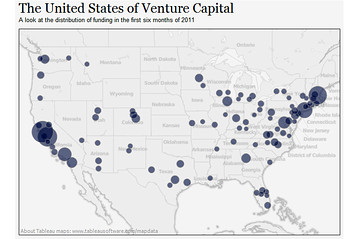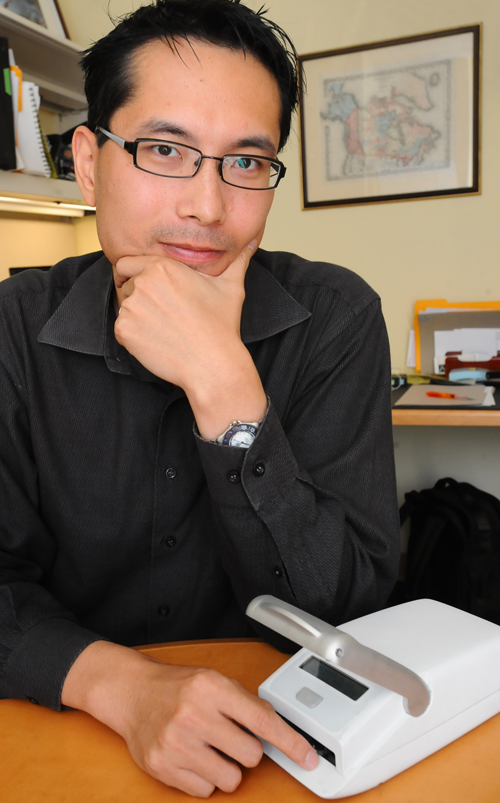Freshman & Sophomores Get Practical Design & Project Experience in Biomedical Engineering
In this video interview Georgia Tech rising senior Jim Schwoebel describes his experience entering college knowing his destiny was to invent, innovate and be an entrepreneur. But, when he got to Georgia Tech, he found that most of the innovation resources were geared to juniors, seniors and grad students.
[youtube http://www.youtube.com/watch?v=Wv80zjX6HZc&w=560&h=315]
Freshman and sophomores weren’t getting the practical medical design, problem solving, project or clinical industry exposure that attracted them to the biomedical engineering track in the first place. So, he did what any good entrepreneur does… he developed what he believed the student market needed… the Medical Device Entrepreneurship Association, an undergraduate club that solved the problem by forming project teams and exposing underclassmen to industry experts and advisors. Learn more by watching the video interview or read the Q&A below.

Jim Schwoebel started the MDEA, a club exposing freshman and sophomores at Georgia Tech to design, invention and innovation opportunities.
Q: What were your experiences a young innovator at Georgia Tech and why did you start the student biomedical entrepreneurship club, MDEA?
I entered college knowing I wanted to invent and innovate. I would download Stanford’s popular podcasts, the ‘Entrepreneurial Thought Leaders’ series in high school. I had an interest specifically in the talks pertaining to medical device entrepreneurship. So when I started my education at Georgia Tech, I looked to participate in medical entrepreneurship in some way. But when I began this search, I noted these problems:
- There were many top-down initiatives pertaining to biotechnology commercialization tailored to graduate students and faculty emerging on Georgia Tech’s campus, but few of these initiatives was tailored to undergraduate students (e.g. TRIBES, the BioID program).
- There were also many undergraduate entrepreneurship organizations emerging across Georgia Tech (Enterprise 2 Empower – Social Enterprise, Startup Exchange – space for entrepreneurs), few which provided a niche for creating medical device companies.
- Also, I did not feel like my educational experience was training me well to have the knowledge that I needed to start a medical device company. There are regulatory complexities, clinical affairs considerations, reimbursement considerations, etc. involved in starting a medical device company, and I did not know where I could go to find this information and feel comfortable with it.
The connecting thread of these problems was that there was an ill-defined medical device ecosystem tailored to undergraduate students at my school, and I felt that by starting this organization this ecosystem would begin to take shape. And after a few months, the networks and resources we built up could be utilized by students to get mentorship and advice in starting companies.
Q: Who participated and what types of things do students do?
Because I am a biomedical engineering student, the main people who participated in our activities were biomedical engineering undergraduate students, but we have tried to reach into all schools and departments to create an interdisciplinary community for medical innovation. So far, we have held two major types of events. The first is a networking session where medical device entrepreneurs and designers come out and speak to students. Called the Roads to Medical Innovation Entrepreneurship Forum, this event is a roundtable discussion where students rotate tables and talk with successful entrepreneurs who have succeeded in starting medical device companies. In this way, this event could stimulate interest and confidence within students to start medical device companies and develop networks useful in the company development process.
Georgia Tech also has a large machine shop – the Invention Studio – with many tools to build and create medical devices, which is maintained by students. Our organization has held events at the machine shop to help students build their devices. We have also partnered with GCMI – the global center for medical innovation – which specializes in prototyping early-stage medical technology for start-up companies. These experiences for students have definitely helped them with their design and prototyping experience related to medical device entrepreneurship.
Beyond general membership events, the executive board is divided up into a networking committee and events committee. The networking committee has 5 networking chairs – student, research, nonprofit, industry, and clinical networking chairs. The goal of the networking committee is to attend conferences and events within the Atlanta community that can help MDEA into the future (recruiting guest speakers, getting introduced to legal networks, etc.). The events committee then makes use of the networks maintained by the networking committee to host events to general members. Therefore, students on the executive board get to attend many interesting events that aid in professional development (I attended 5-6 conferences last year). We designed it this way so that the organization can be applied and adapted to any arbitrary community, so that students of other schools may be able to mimic the model to centralize networks and resources within their communities through our model. With this strategy, we believe we have seeded an ecosystem that can continue to grow and add additional events such as educational seminars and business strategy workshops.
Q: What types of things should a Student think about if they were wanted to start a club like this?
I would suggest the following:
- Choose a good faculty advisor (someone who has started a company) – when I mention Dr. Ken Gall’s name, so many people know him in the medical entrepreneurship community that it helps us with initial branding/marketing to other faculty and entrepreneurs
- Establish organizational partnerships – Georgia Tech has a President’s Council for all biomedical engineering-related organizations which has helped us to
- Make a good website – good for marketing purposes and extend reach into industry (that’s how Drexel University contacted me to start a chapter)
- Partner with existing faculty initiatives (GCMI, GTRI, etc.) – allows you to possibly find funding more easily and helps you to access useful networks
Beyond these things, I would download the expansion package resources that we have created from our organization in the first year of development. We have set-up a webpage where students from other schools can start a new MDEA chapter. This page allows you to watch a video and download resources regarding our organizational model. These resources include advertising materials, business cards, a constitution, funding leads, links to our website, logos, an organizational proposal, PowerPoints, recruitment emails, a 1 year strategic plan, and website resources. In this way, we hope to empower students from other schools to benefit from the work that we have done, as well as expand our model into a cross-university, open source community.
On behalf of students looking for meaningful opportunities for innovation in the University environment, I’d like to thank Jim for spearheading this effort, serving as a student changemaker at Georgia Tech, and taking the time to tell us about it. Jim and his team are very interested in ‘open sourcing’ all the information about how to set up a club like MDEA on your campus. I encourage students at other BME campuses to look at the information Jim makes available (mentioned above), right here. Maybe YOU can lead the way, like Jim did, on your campus.
~ Humera Fasihuddin, Manager of Student Programming, T: @ihumera











